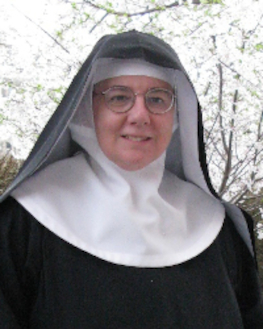- Home
-
About
 Fidelity & Excellence
Fidelity & ExcellenceThomas Aquinas College is unique among American colleges and universities, offering a faithfully Catholic education comprised entirely of the Great Books and classroom discussions.
-
A Liberating Education
 Truth Matters
Truth MattersTruth, and nothing less, sets men free; and because truth is both natural and supernatural, the College’s curriculum aims at both natural and divine wisdom.
-
A Catholic Life
 Under the Light of Faith
Under the Light of FaithThe intellectual tradition and moral teachings of the Catholic Church infuse the whole life of Thomas Aquinas College, illuminating the curriculum and the community alike.
-
Admission & Aid
 Is TAC Right for You?
Is TAC Right for You?Do you enjoy grappling with complex questions? Are you willing to engage in discussions about difficult concepts, with the truth as your ultimate goal?
-
Students & Parents
 Mind, Body & Spirit
Mind, Body & SpiritThere is always something to do at TAC — something worthwhile, something fulfilling, and something geared toward ever-greater spiritual and intellectual growth.
-
Alumni & Careers
 What Can You Do with a Liberal Education?
What Can You Do with a Liberal Education?Nothing speaks more to the versatility of the College’s academic program than the good that our alumni are doing throughout the Church and the world.
- Search
- Giving
Alumna Sister Helps Complete New Translations of Hymnal for Liturgy of the Hours

Sr. Maria Kiely, OSB (’77) lives in Washington, D.C., teaching Greek at the Dominican House of Studies and Latin at Catholic University. She is on the editorial committee for ICEL, the International Commission on English in the Liturgy. ICEL was established during the Vatican Council by Bishops from countries where English is used as a liturgical language. It is responsible for the revised translation of the Roman Missal, promulgated in 2011 and now in use.
Last fall, ICEL finished translating the Latin Liber Hymnarius, the hymnal for the Liturgy of the Hours revised after Vatican II. At their annual meeting last November, the bishops of the USCCB voted to accept the ICEL translations of the 294 hymns of the Liber Hymnarius. These will appear in fascicles as a complement to the existing Liturgy of the Hours; later they will be integrated into the forthcoming revised edition of the Liturgy of the Hours mandated by the USCCB.
Since the Liber Hymnarius includes hymns of St. Ambrose, Prudentius, medieval authors, and others spanning the entire tradition of Catholic hymnody, the ICEL translations represent a retrieval of a significant aspect of the liturgical and spiritual patrimony of the Church. The theological richness of these hymns is such that they will bring new depth to the recitation of the hours of the liturgy. They may also be used in any circumstances where the singing of hymns is appropriate.
According to ICEL, the English hymns are close translations of the Latin texts, so that as much as possible of the theological and spiritual content of the originals may be preserved. The meters proper to each Latin text have been maintained, so that each hymn may be sung both to the chant melody given in the Liber Hymnarius and to any modern metrical tune of the same meter. Though rhyme is a salient feature of English hymnody, it is less prominent in Latin hymns; some of them rhyme and some do not. Even hymns that rhyme are less clearly defined by it, because rhyming and assonance often result merely from the inflections of the language. Rhyming also requires frequent inversions that compromise the content and become tedious in longer hymns.
ICEL has sought to prepare for the reception of the hymn translations by the Bishops’ Conferences and by the wider public by making representative examples available through the internet. Under the direction of Daniel Grimm (’76), the Thomas Aquinas College choir has sung representative examples of the ICEL hymns set to chant melodies and to modern hymn tunes, which are available on YouTube. As the choir sings, the text of each hymn appears verse by verse on the screen.
If you have questions and would like to know more about the hymns, please feel free to contact ICEL.

